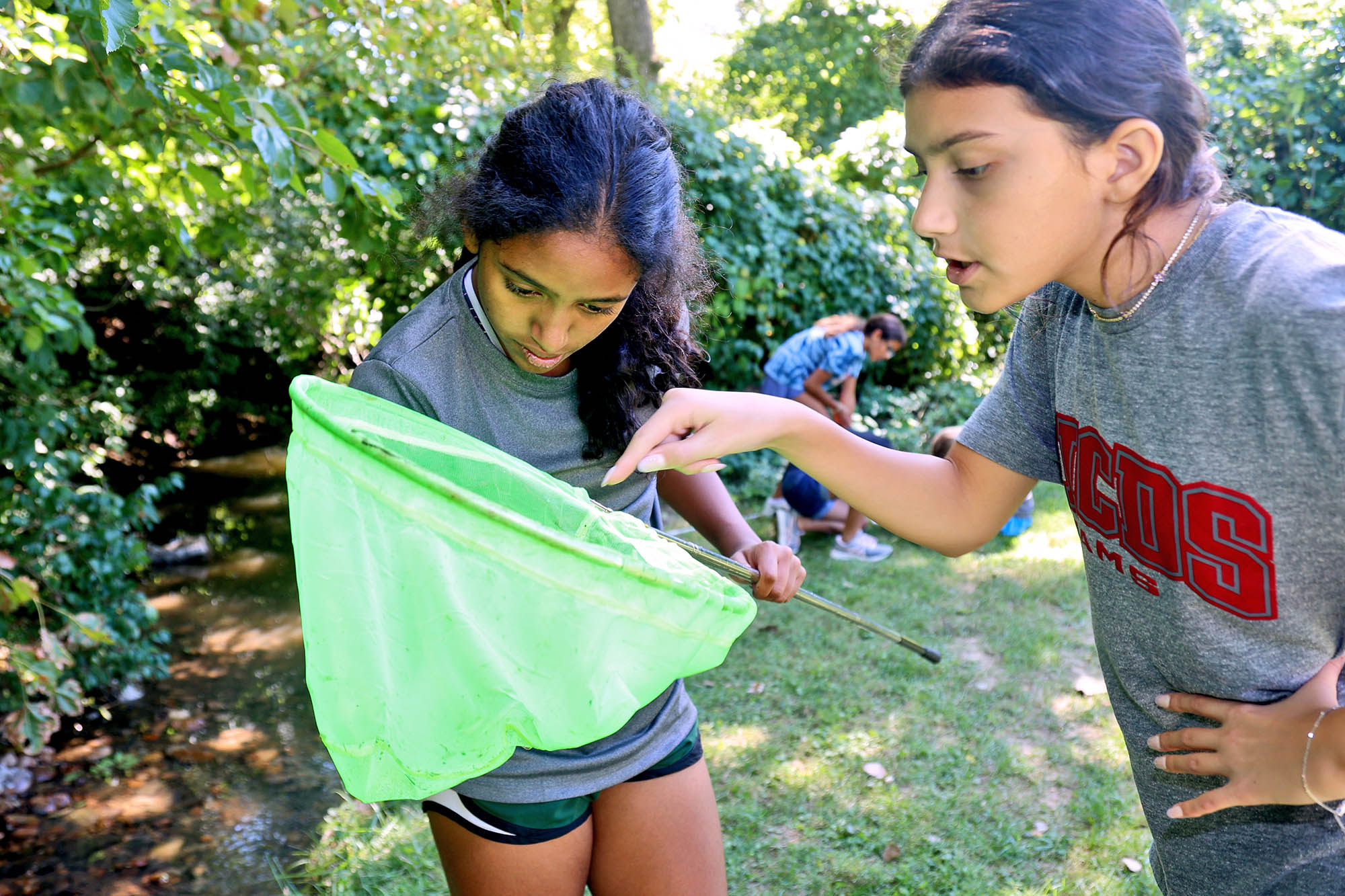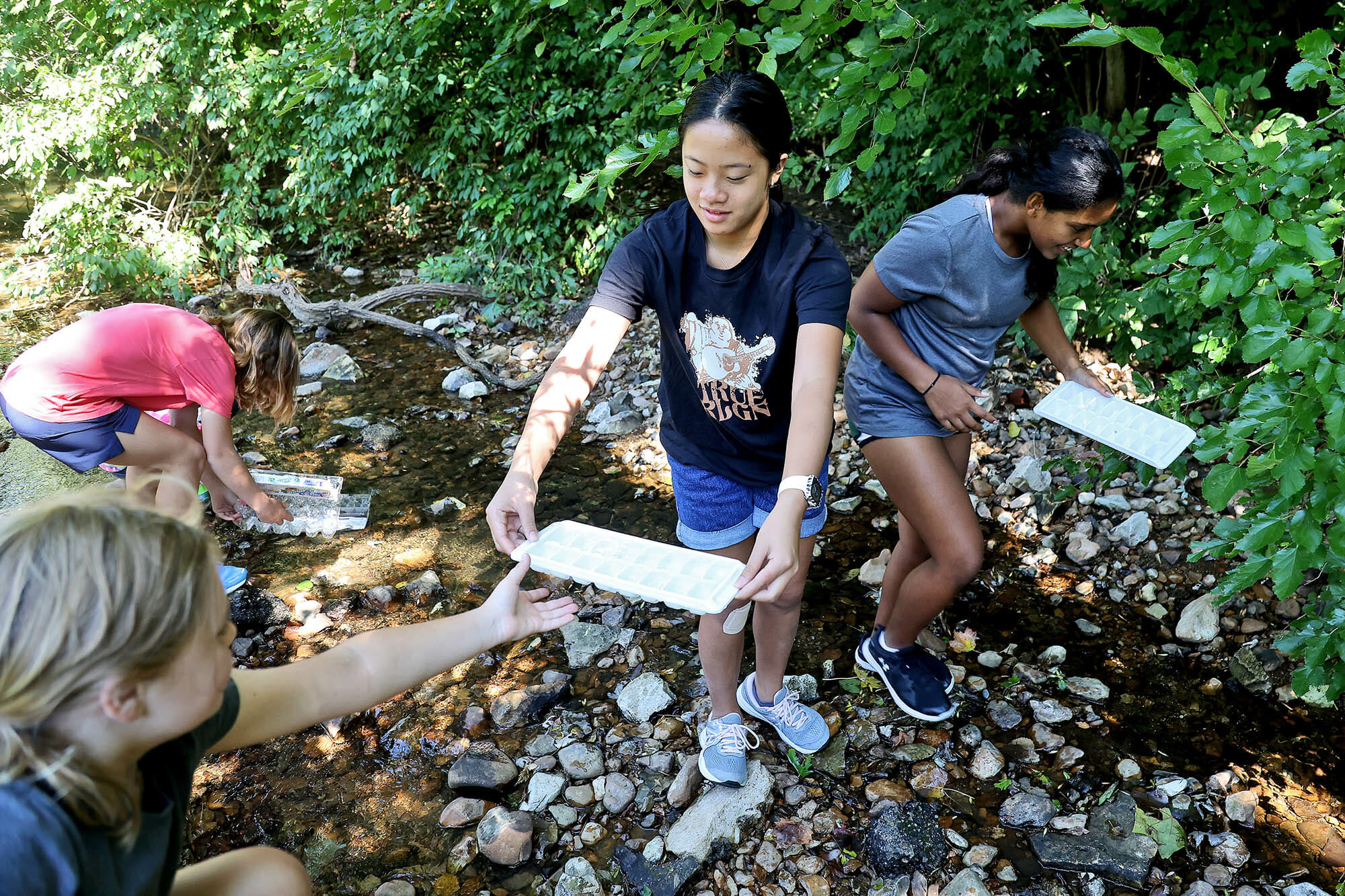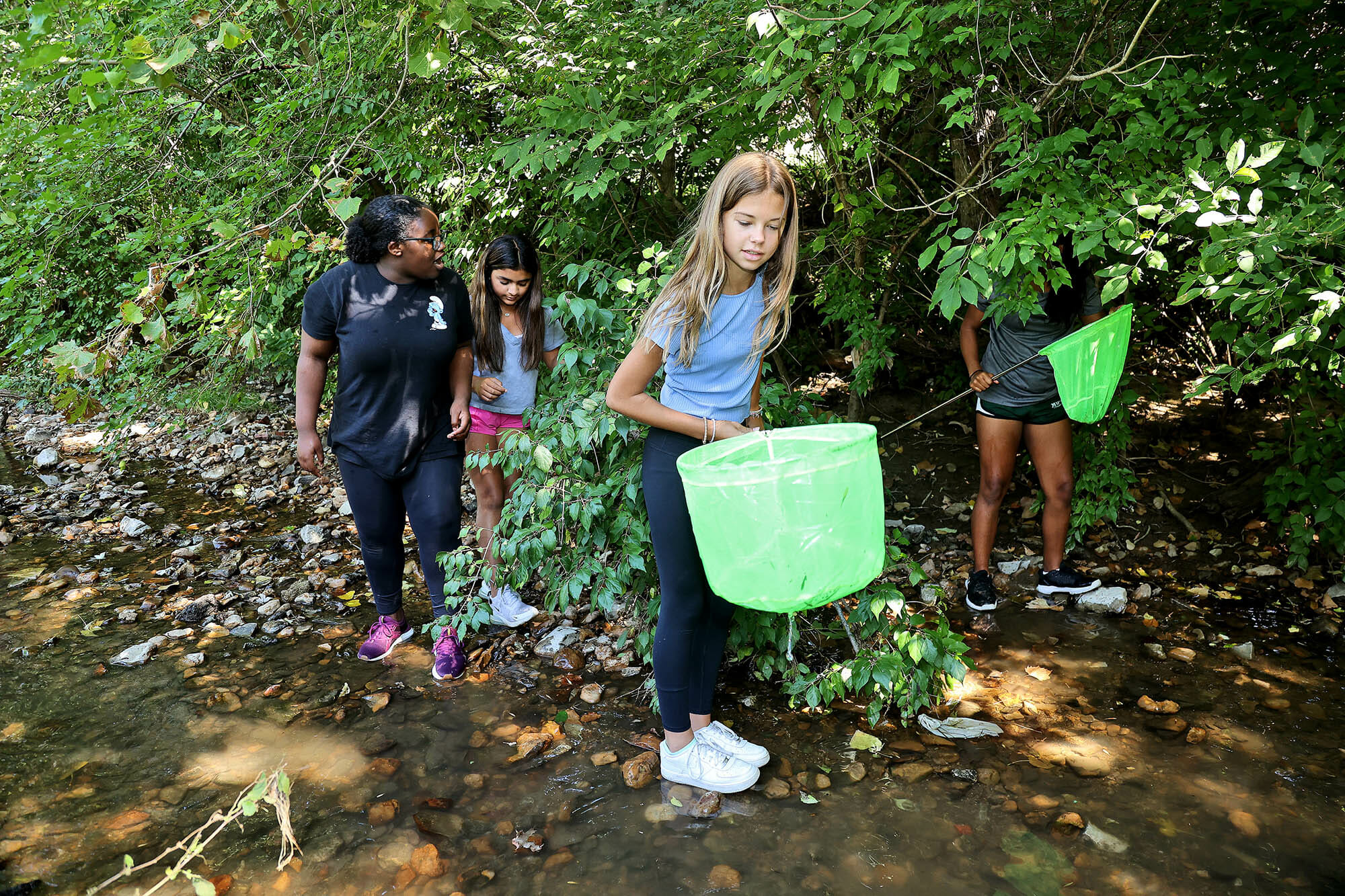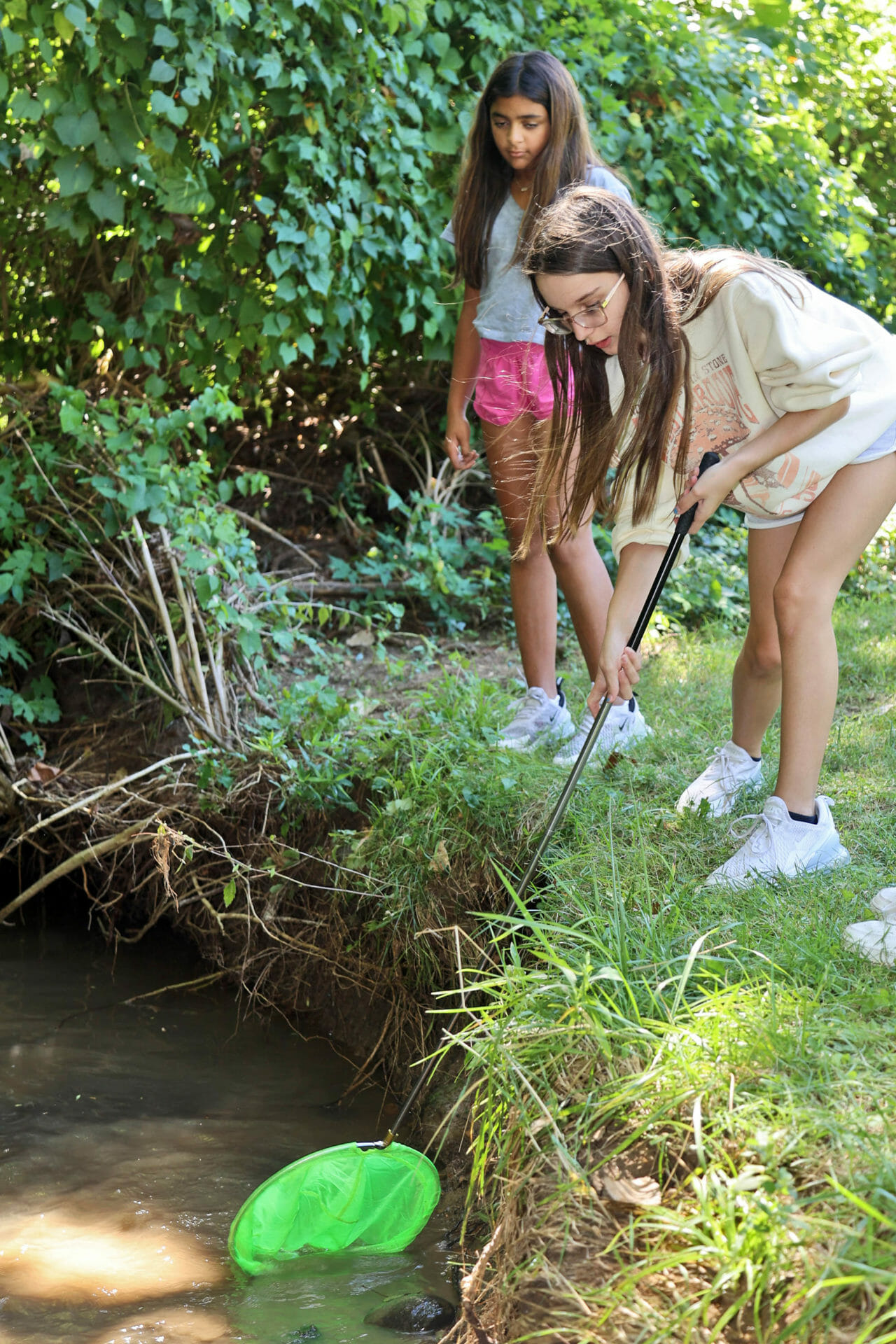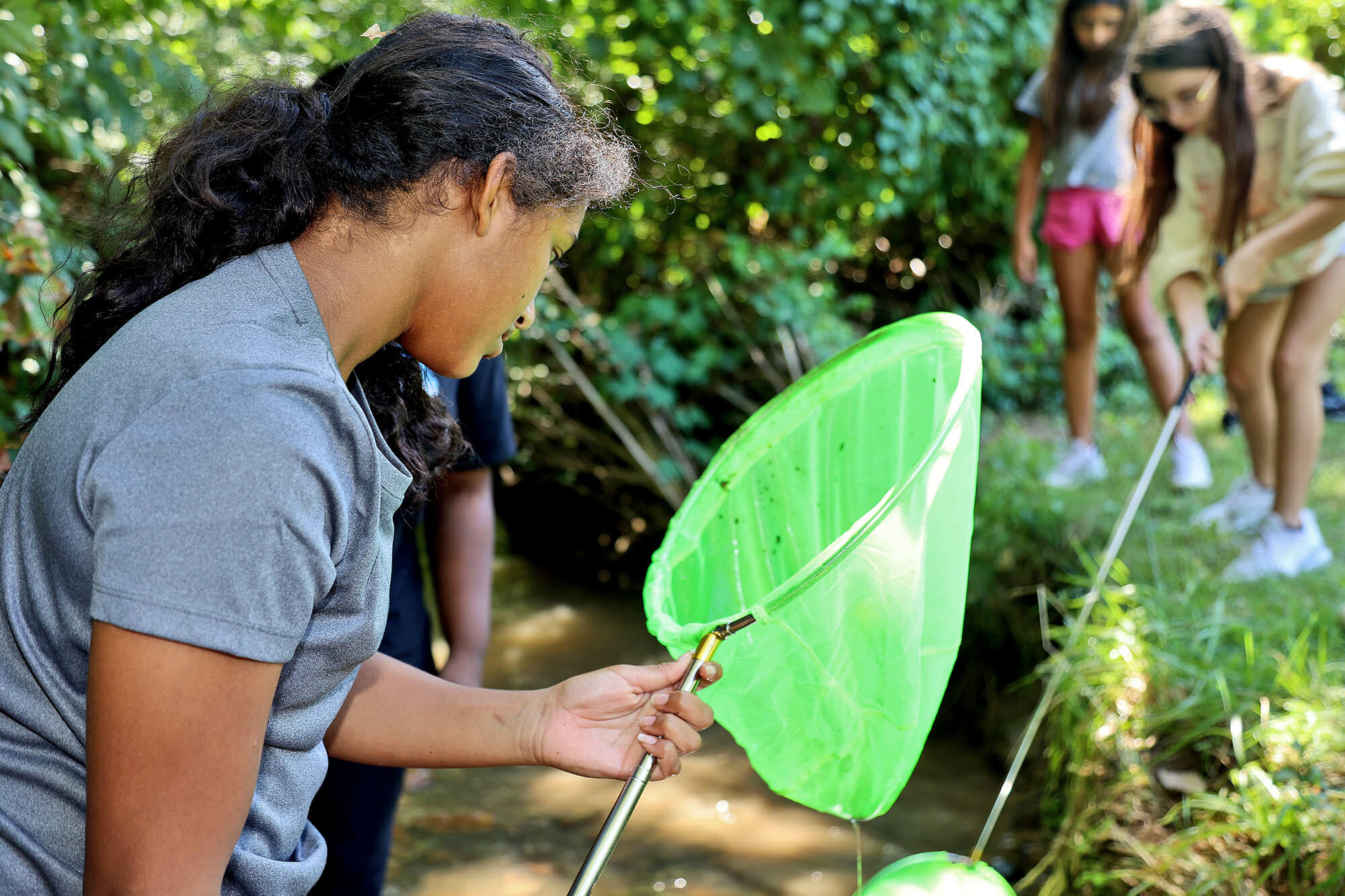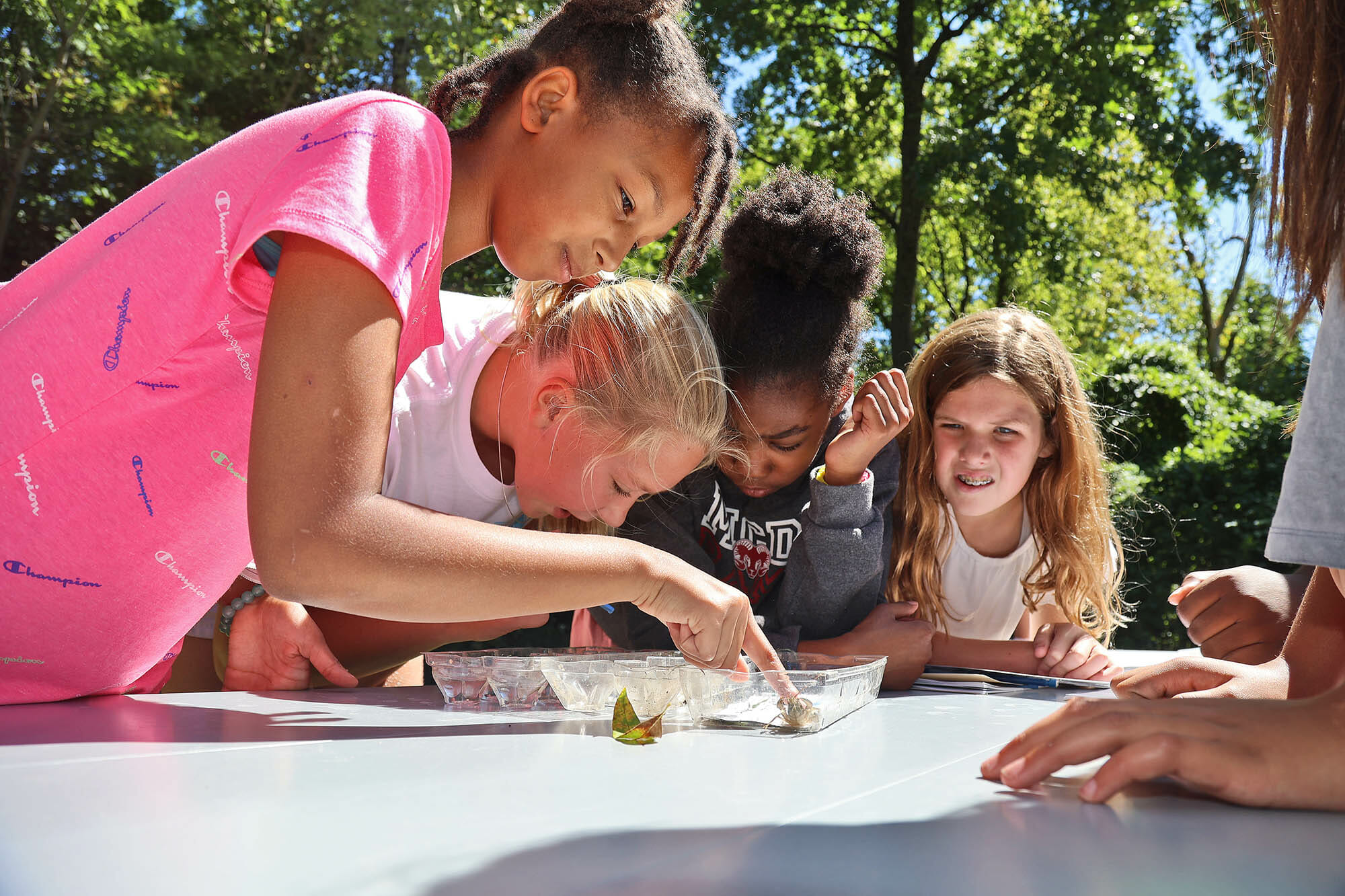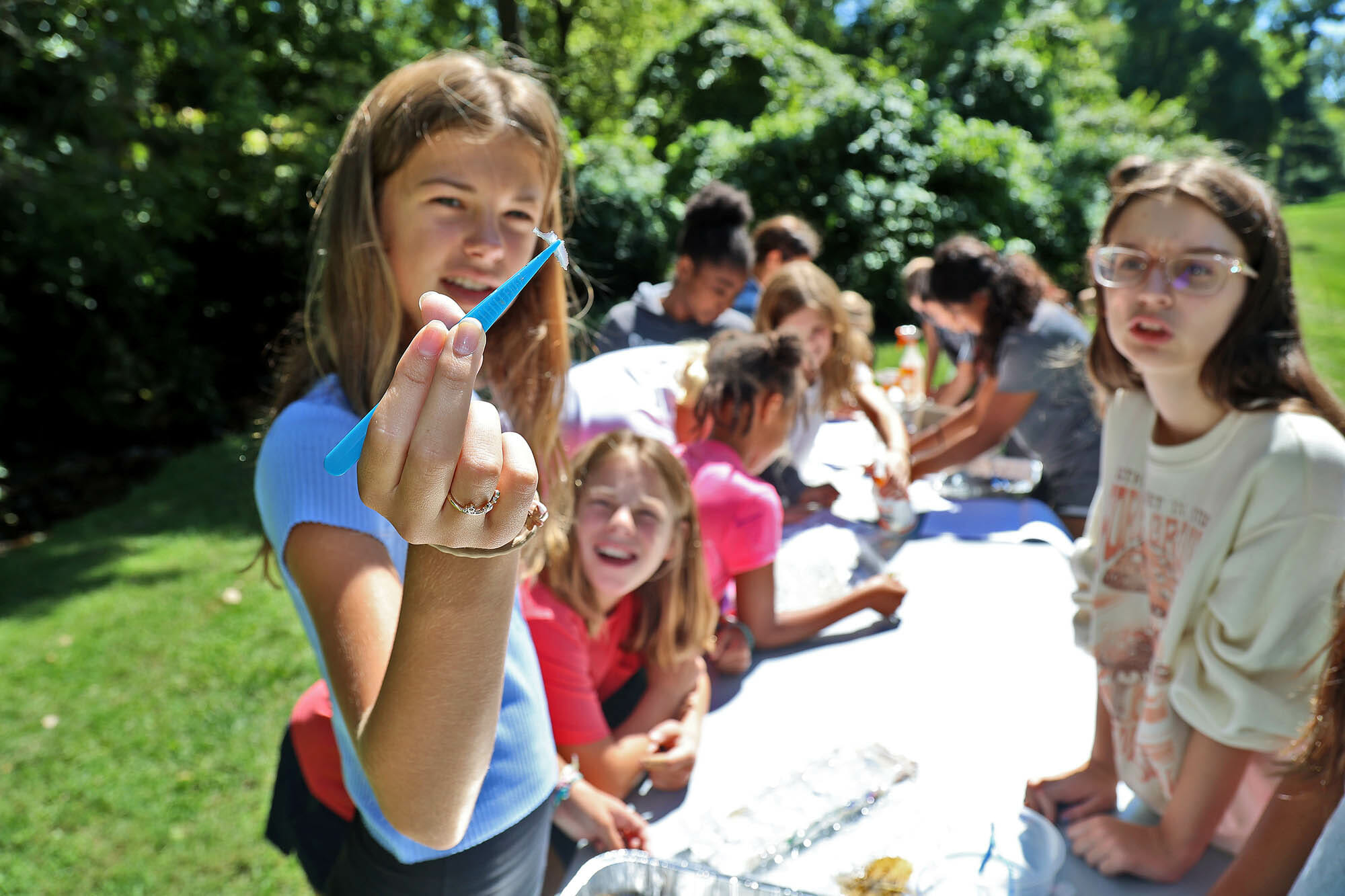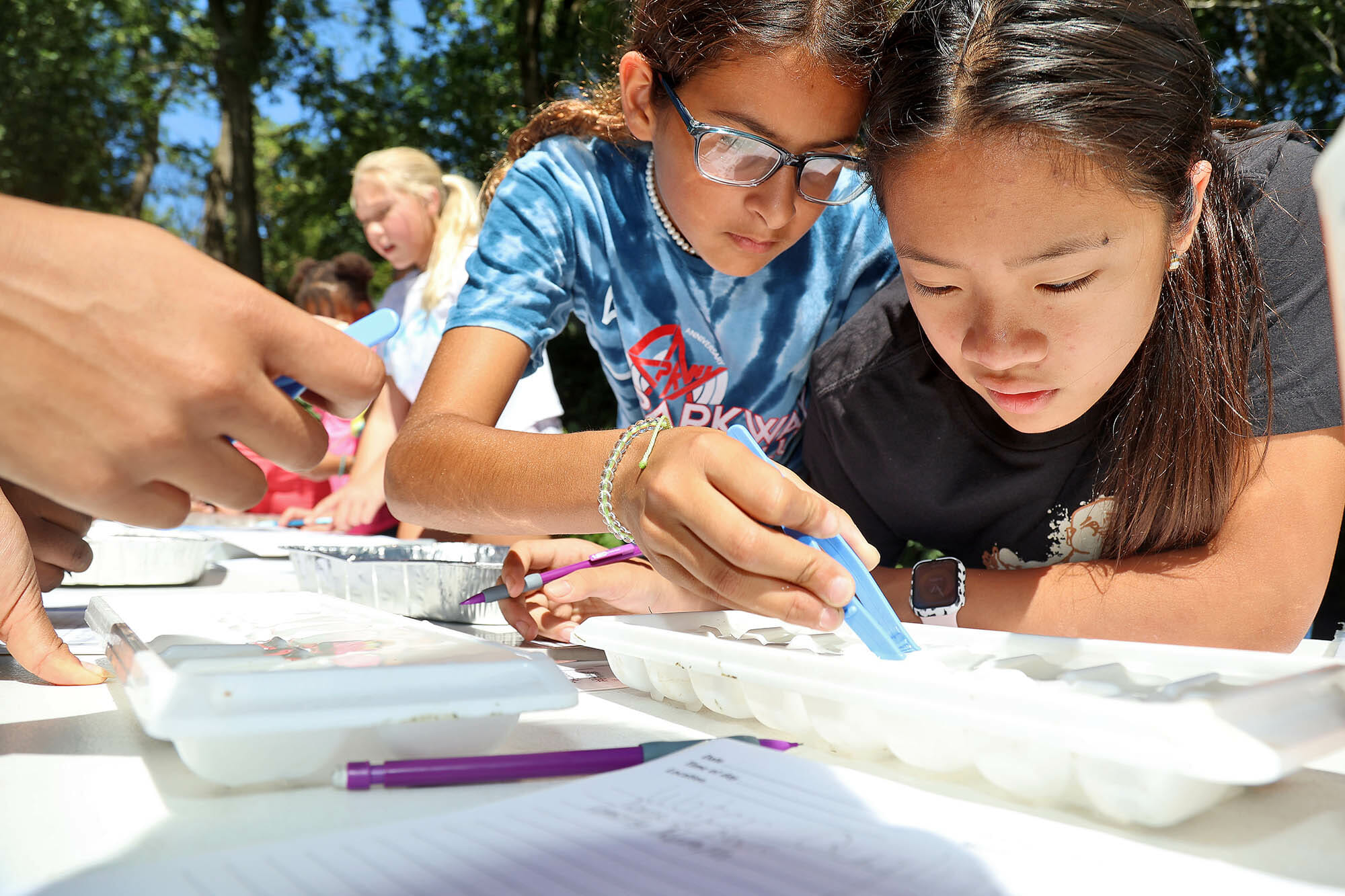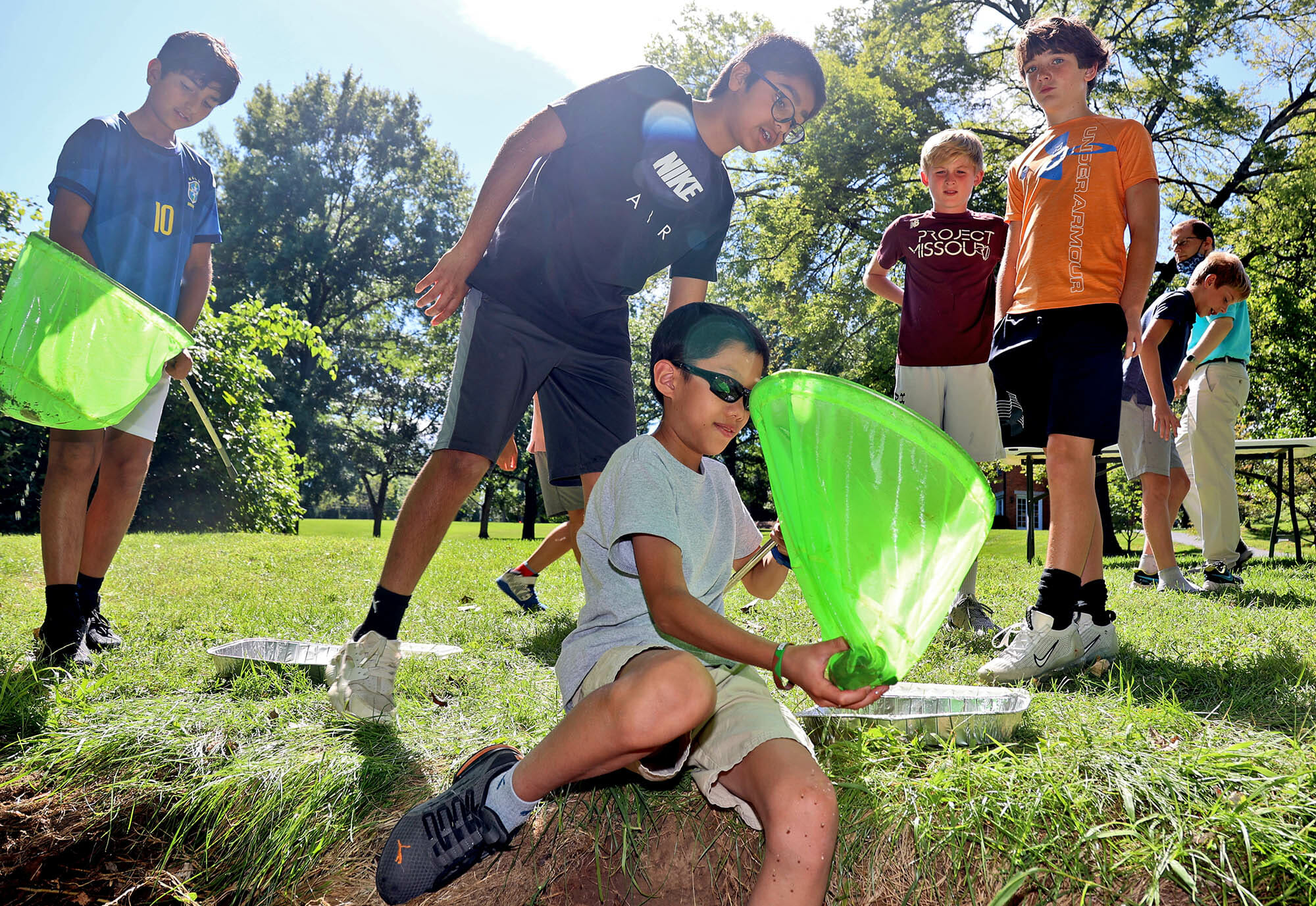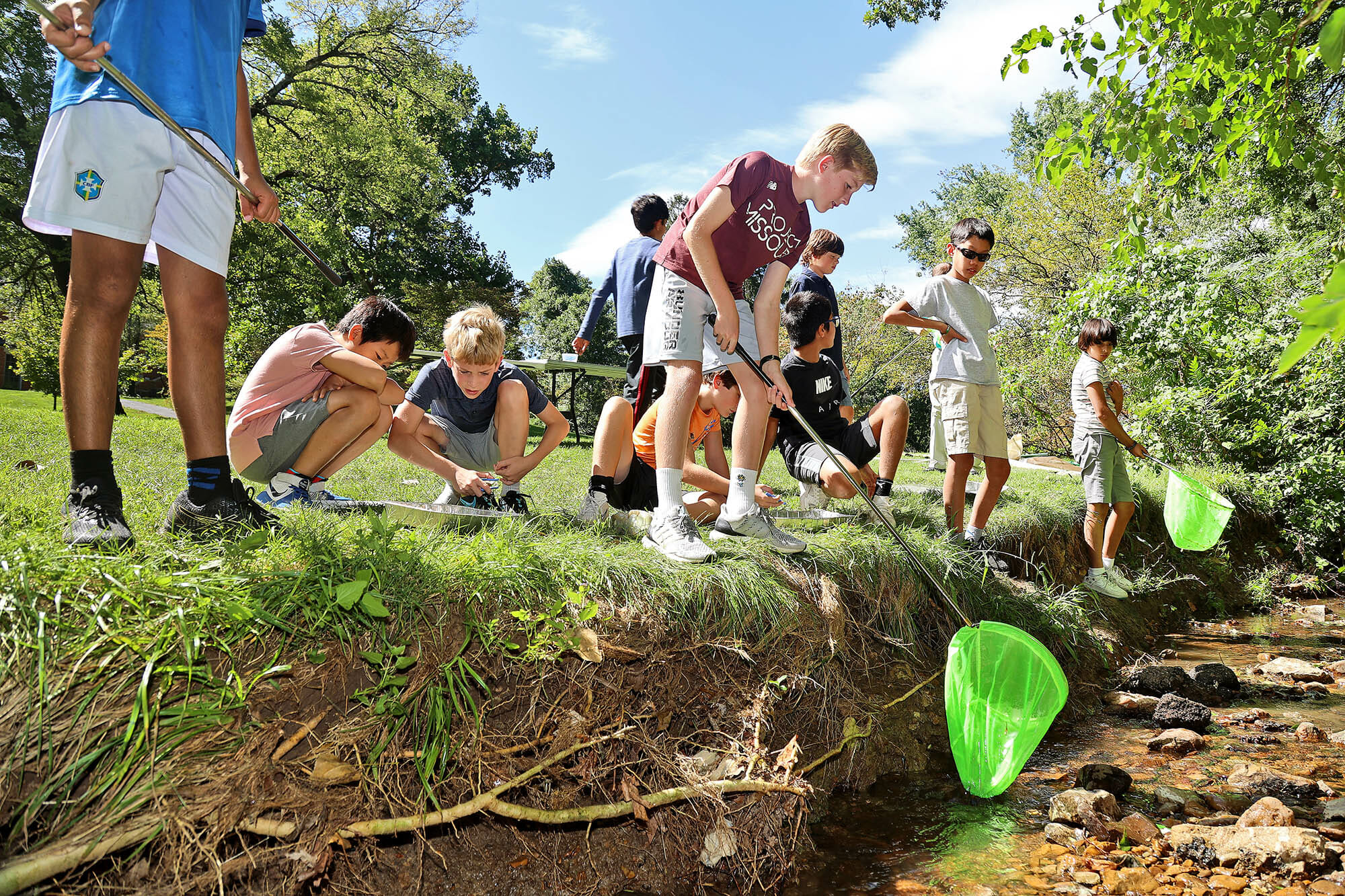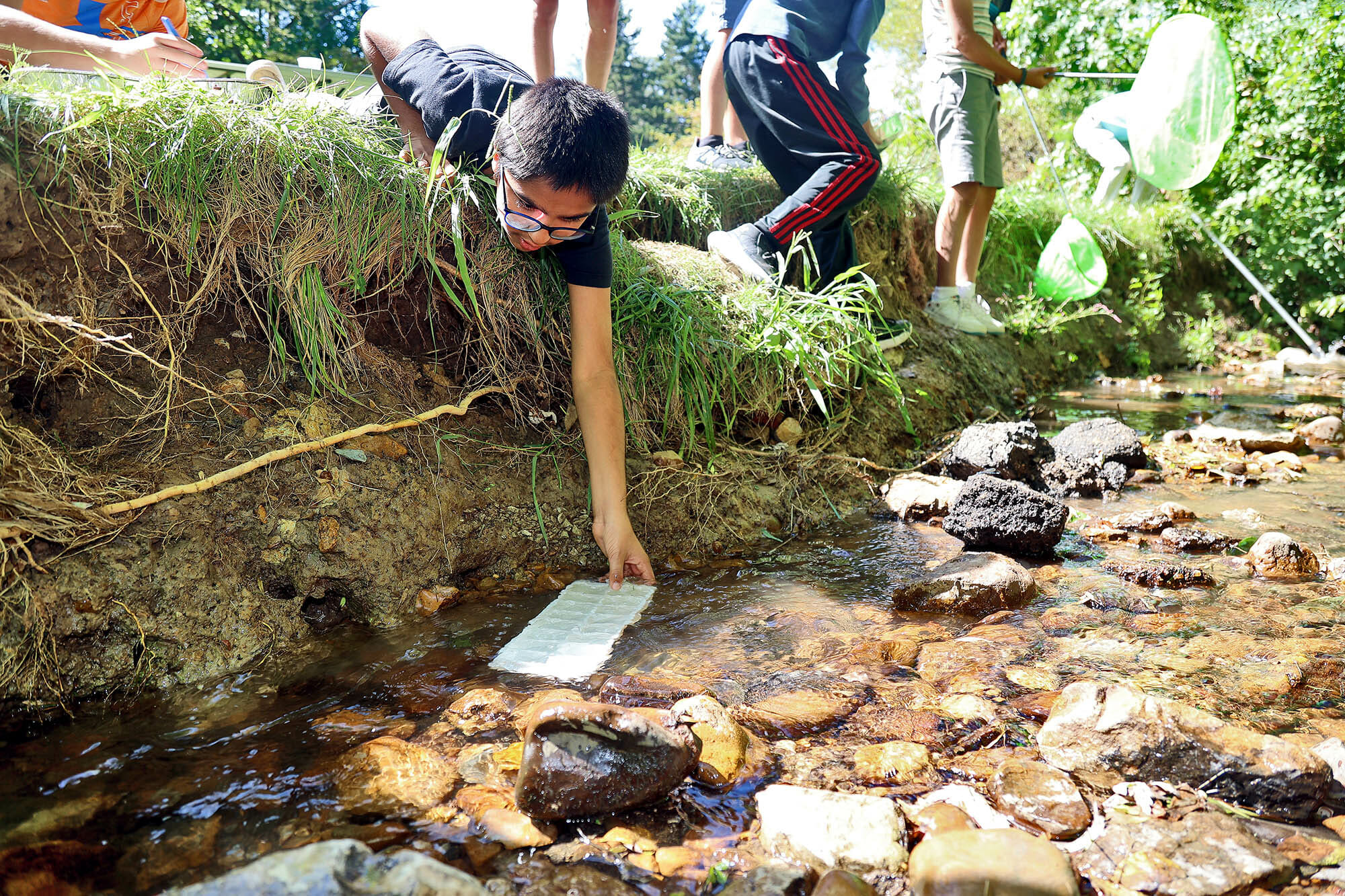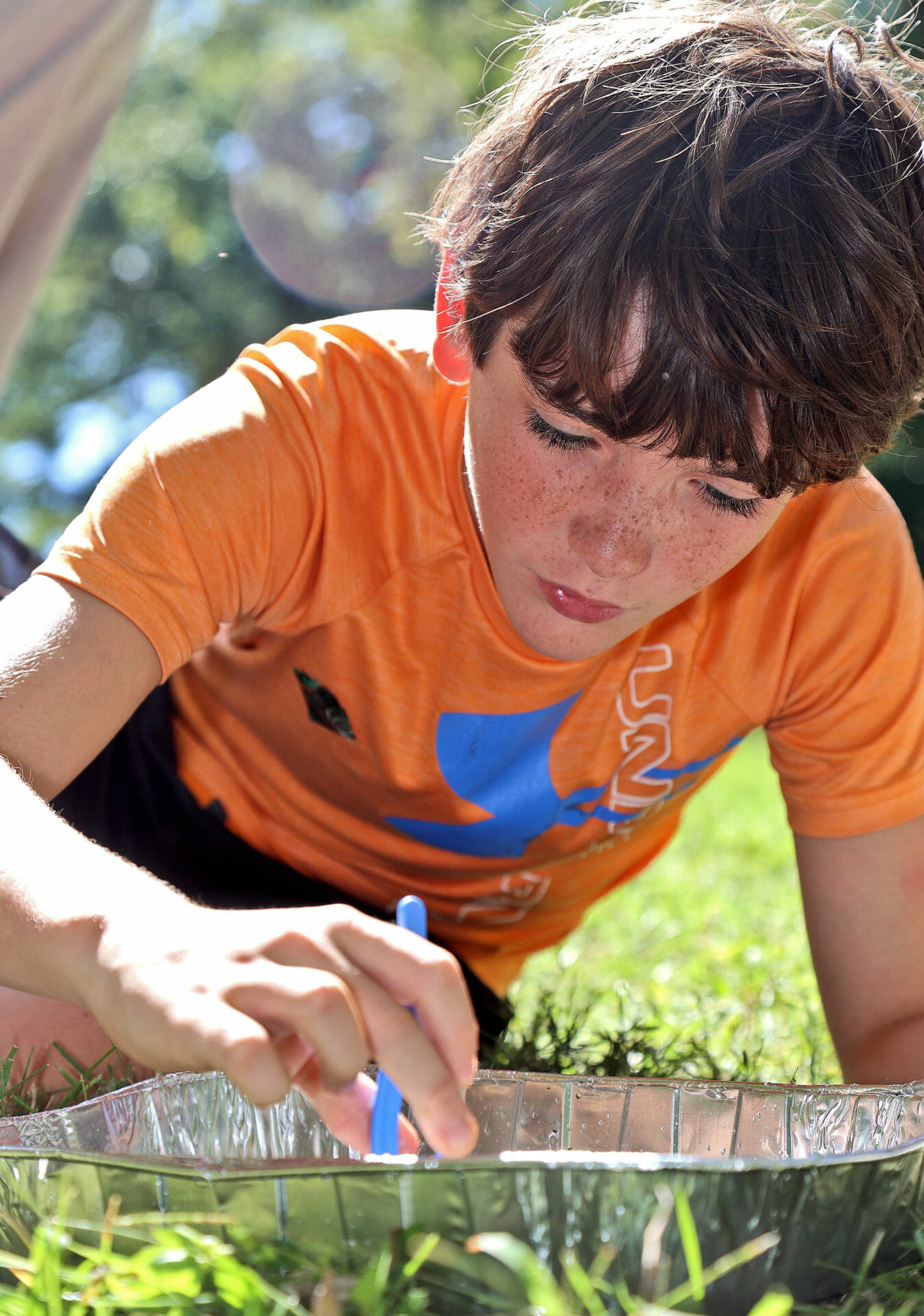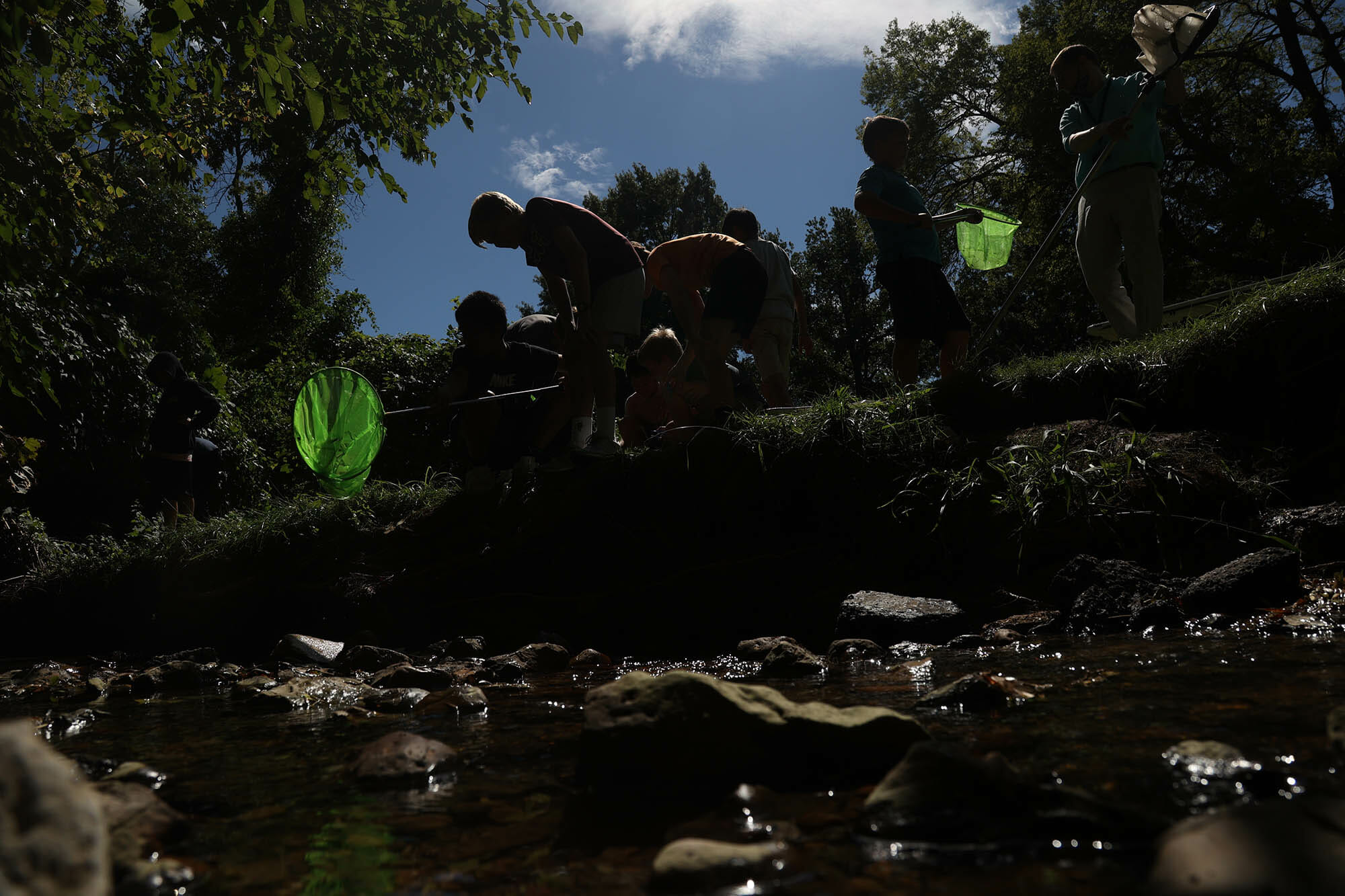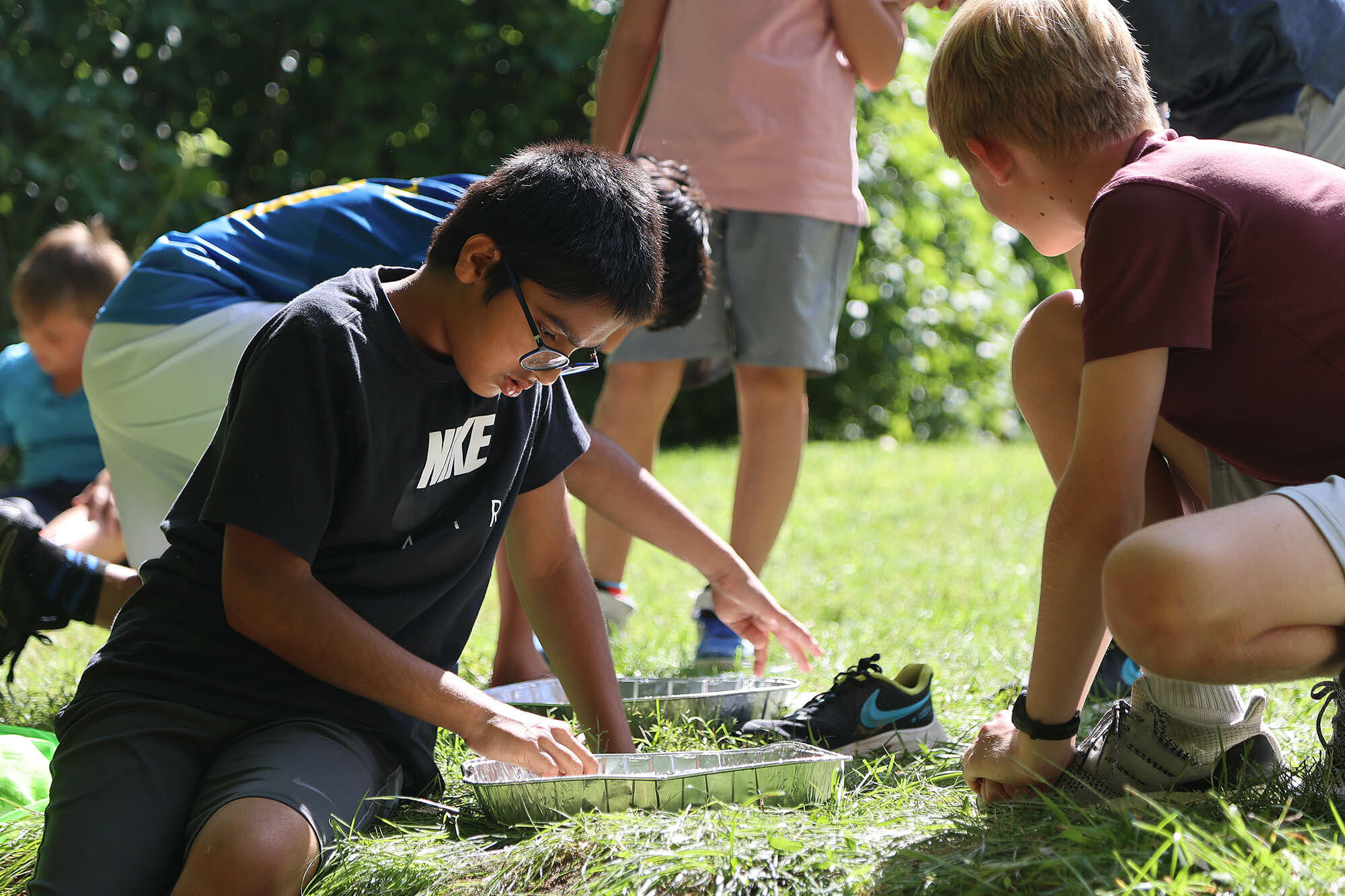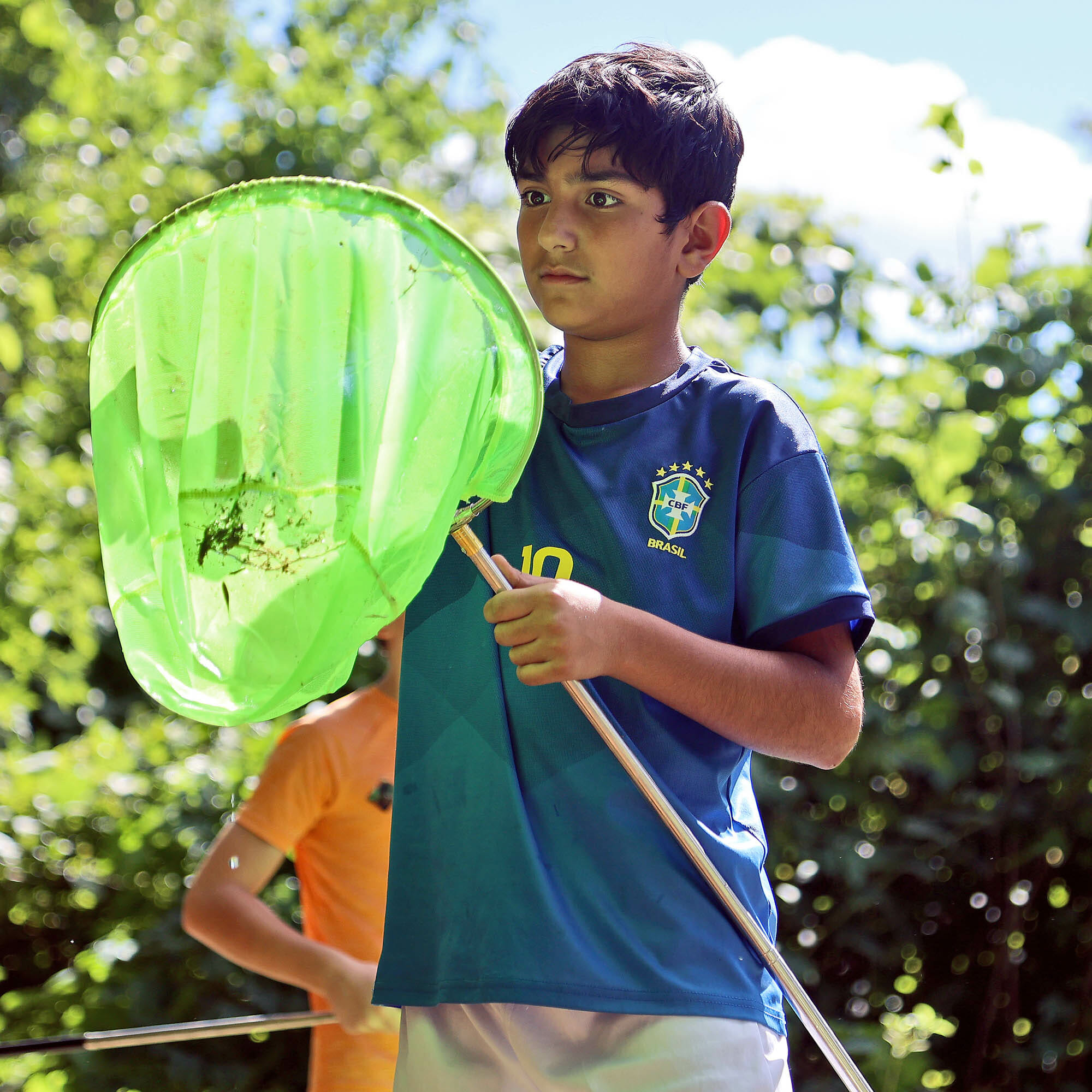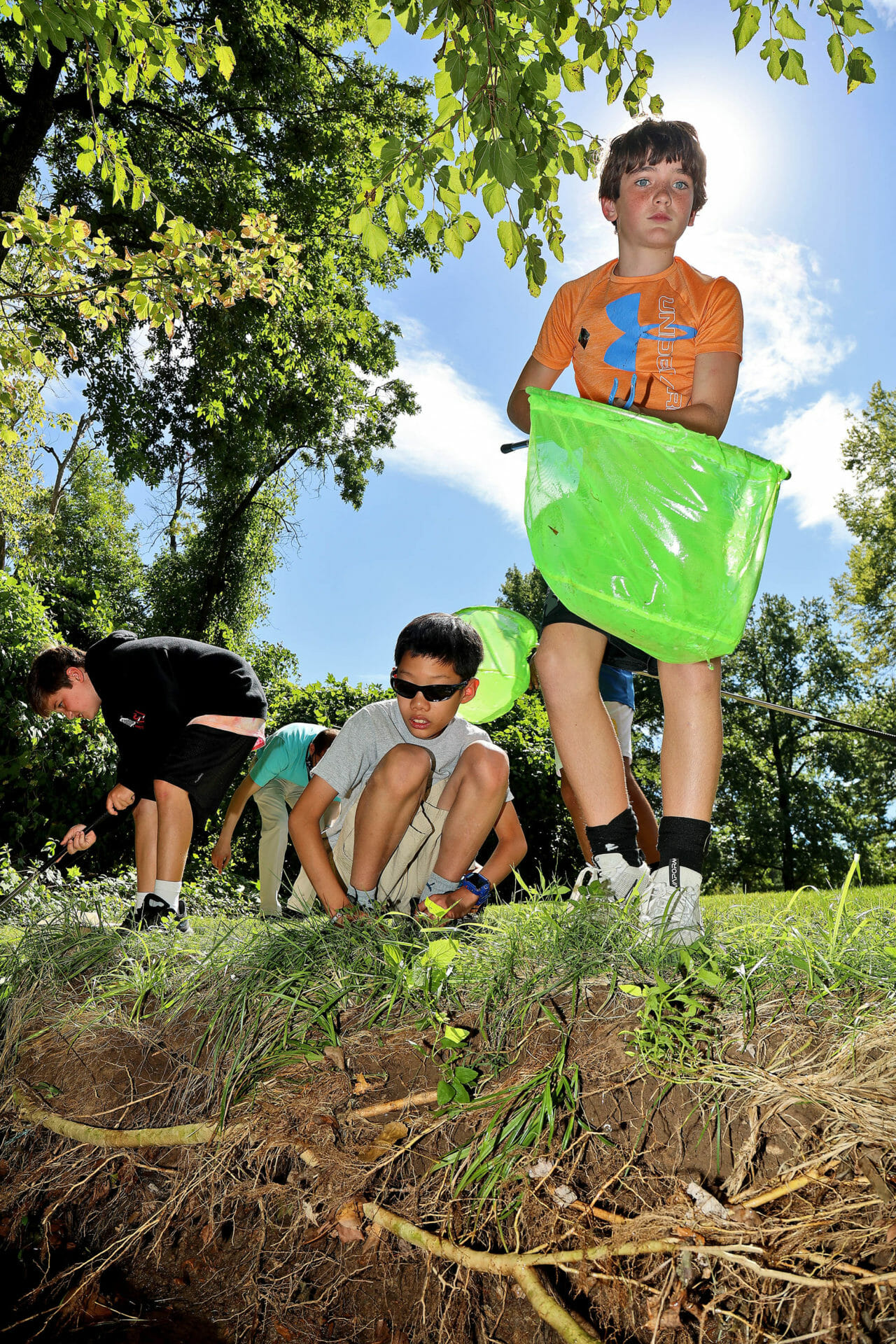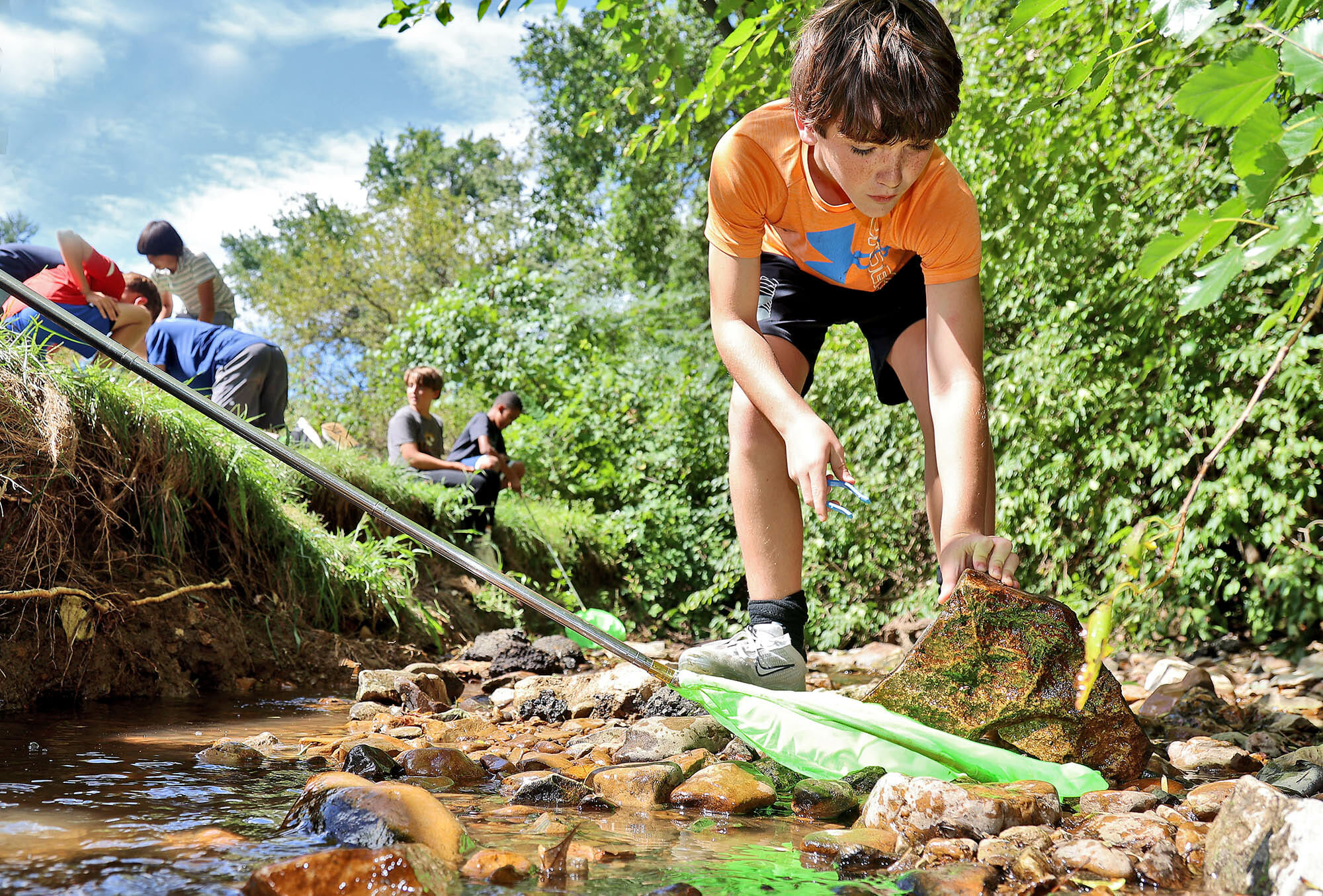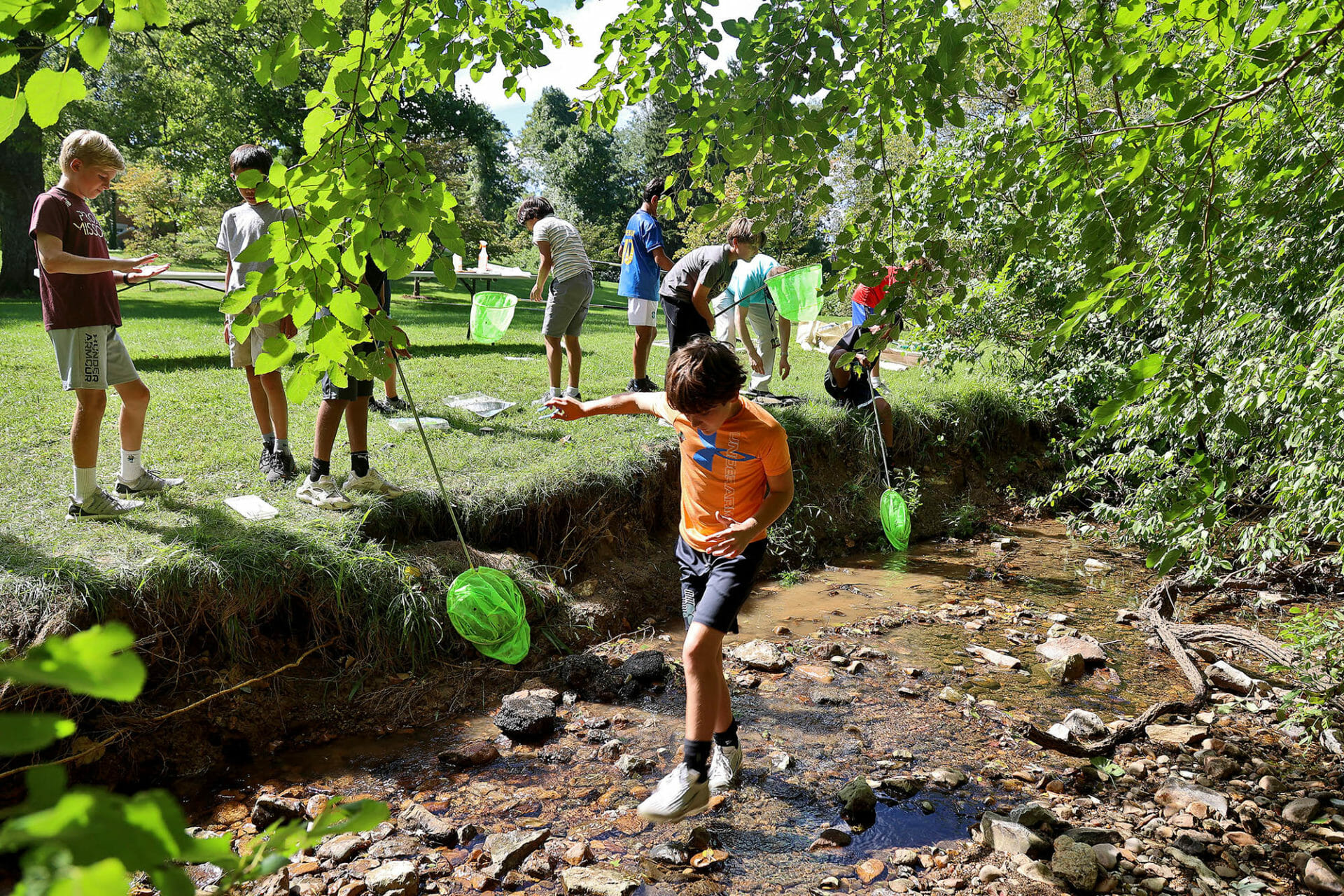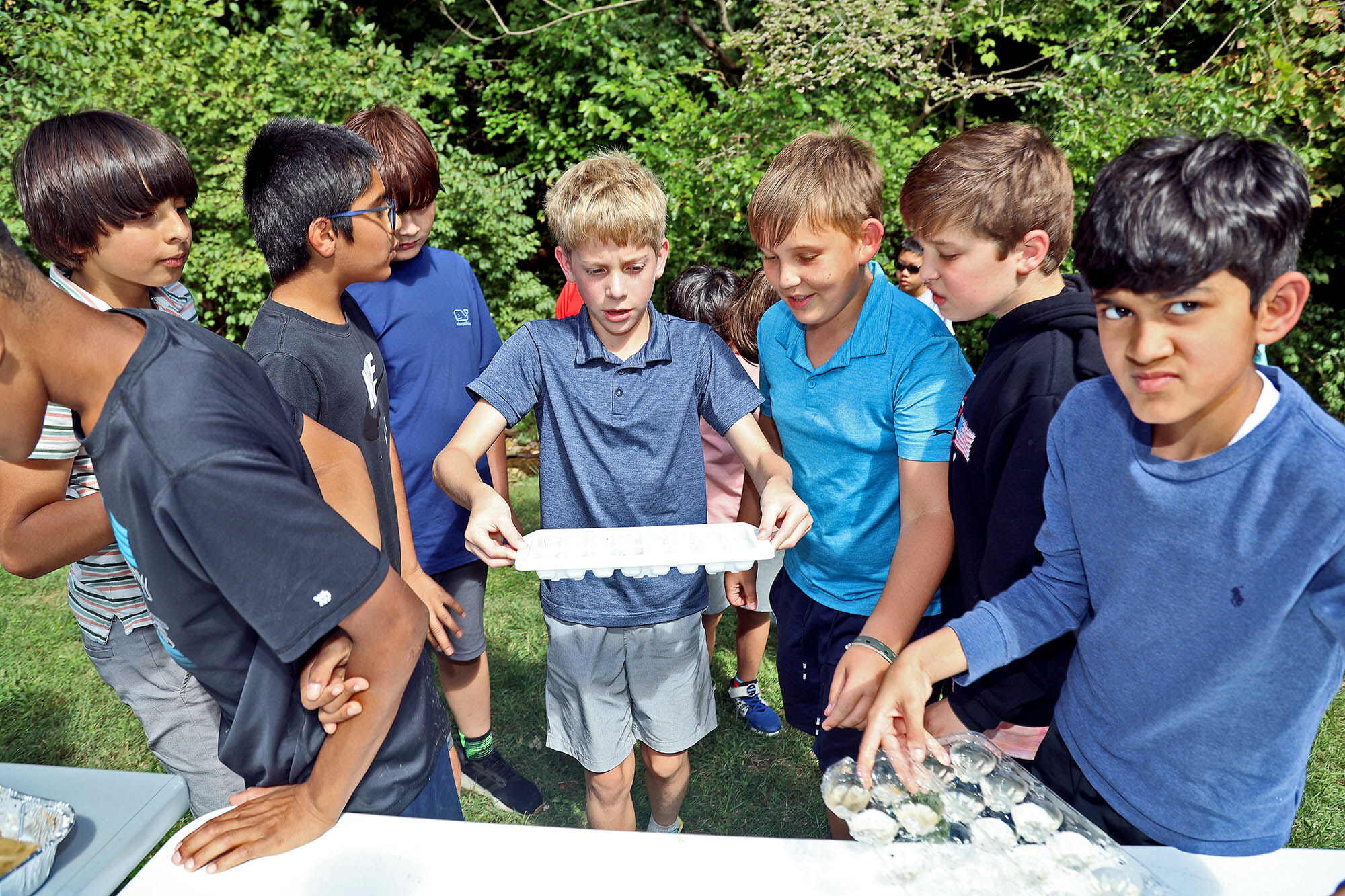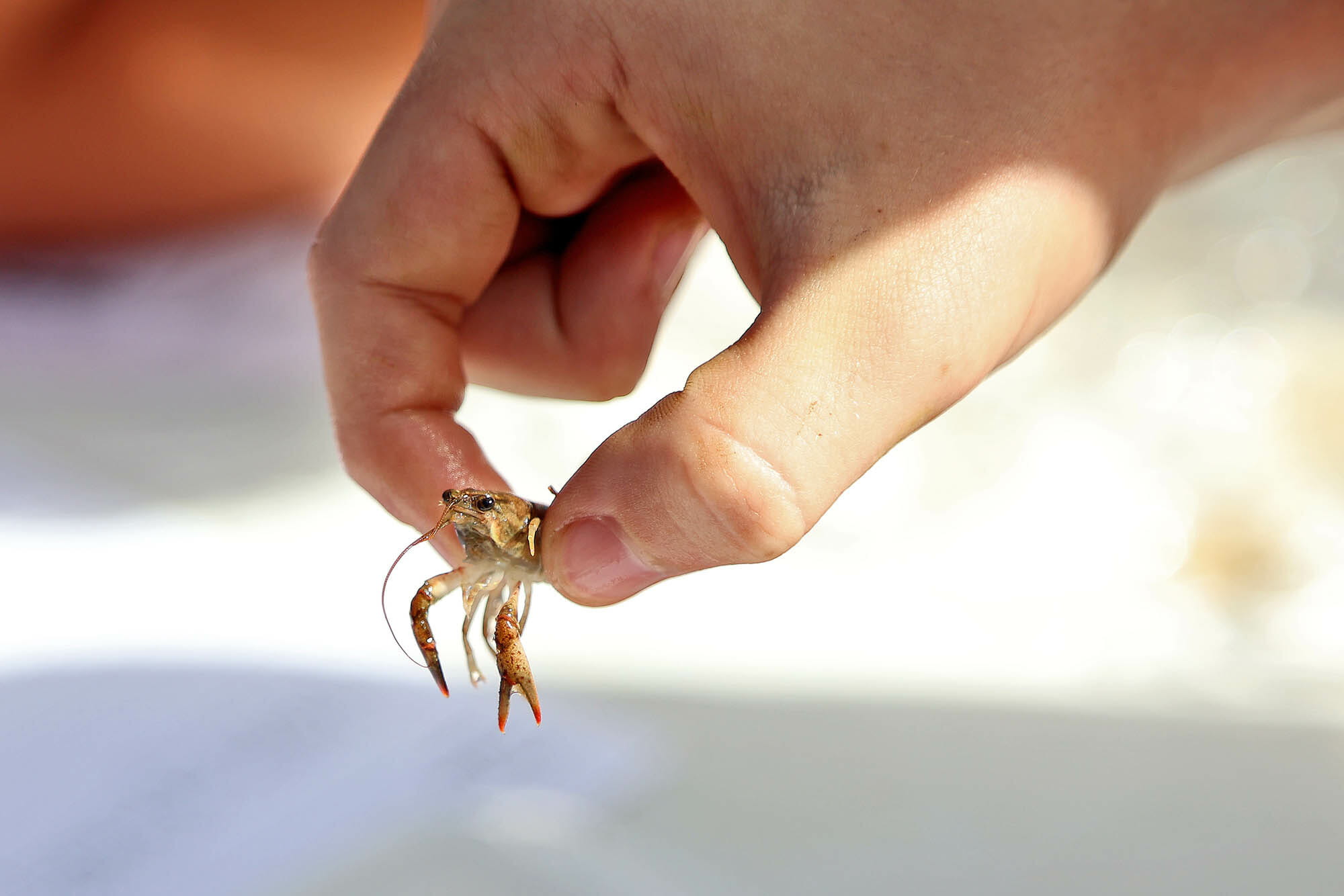Sixth-grade science students can’t seem to stay out of the creek. Last week, they conducted chemical tests on the water in the campus stream. This week, they were back in the water to look for macroinvertebrates.
Middle School Science Teacher William Bander explained what those are. “Invertebrate” means lacking a backbone. “Macro” means large (the opposite of “micro”). “A macroinvertebrate is an animal that lacks a backbone and is big enough to be seen with the naked eye,” he said. “There are many species of macroinvertebrates that live in our freshwater ecosystems.” Some of them are very tolerant of pollution, while others can only live in clean waters. By collecting macroinvertebrates in a body of water and calculating their relative abundance, students are able to gauge the level of pollution in that body of water. This is important as most of our drinking water comes from the rivers and streams where these animals live. “They are basically the ‘canaries in the coal mine’ telling us what waters have low or high levels of pollution,” said Bander.
Many of these macroinvertebrates are the larva and nymphs of flying insects. Dragonflies, crane flies, mosquitos, and even some species of beetle start out in the water until they mature into adults, trading their gills for wings (not unlike how caterpillars become butterflies), although there are some macroinvertebrates that stay in the water their whole lives. Crayfish (or crawdads), snails, mussels, and aquatic worms experience their whole life cycle in the stream. Regardless, they all play an important role in aquatic ecosystems as food for our native fish, frogs, turtles, birds, and mammals.
Students in Bander’s three classes found a variety of macroinvertebrates in the campus stream this week. Crayfish were the most popular, but there also were several damselfly nymphs, mayfly nymphs, predaceous diving beetles, and even leeches found in the creek. The activity provided students with some hands-on biology that reflects on the health of an MICDS ecosystem, as well as an application of math as students had to quantify the relative abundance of each type of macroinvertebrate multiplied by its pollution tolerance rating to give us an estimate of how healthy or polluted the stream is.
Evan Ragland ’29 said, “We could see how healthy the creek was by seeing what macroinvertebrates strived in the creek. For example, mayfly nymphs would be sensitive to pollution, so if there was a mayfly nymph in the creek, the creek would not have that much pollution. My favorite part of the project was identifying different macros and putting them into different bins.”
Students also connected this activity with how we as a community can positively influence our watersheds. Planting native trees around streams to reduce erosion, limiting fertilizer and pesticide usage around bodies of water, and creating natural buffers between runoff spots (like roads and parking lots), all help keep our sources of water clean and our natural spaces green. “It is important to keep our water healthy so wildlife can strive in the water,” said Ragland. “I thought this project was very fun because it was fun looking at different macros.”
